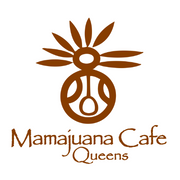
Tres leches cake is a delicious dessert that can turn any meal into a celebration. For years it’s been a staple of Latino cuisine, but it’s also common in American restaurants and bakeries of all kinds. If you’re unfamiliar with this sweet treat, the guide below discusses the history of tres leches cake and how it’s made.
A Guide to Tres Leches
History of Tres Leches Cake
Although the exact origin of tres leches cake is unknown, soaked cakes have been popular around the world for centuries, and in Latino cuisine, they may have evolved from the traditional Mexican antes, a cake soaked with sherry and custard. As canned milk gained popularity around the time of World War I and World War II, some food companies established plants in Mexico. They often printed tres leches cake recipes on their labels, spreading the dessert throughout Latin America.
How It’s Made
 Tres leches is Spanish for “three milks,” and in the case of this classic dessert, it refers to evaporated milk, sweetened condensed milk, and heavy cream. The cake itself is a simple sponge cake that gets its airy, light texture from whipped egg whites. After the cake cools, the three milks mixture is poured over the cake. To give the sponge enough time to absorb the mixture, it’s best to let it sit for a few hours before eating it.
Tres leches is Spanish for “three milks,” and in the case of this classic dessert, it refers to evaporated milk, sweetened condensed milk, and heavy cream. The cake itself is a simple sponge cake that gets its airy, light texture from whipped egg whites. After the cake cools, the three milks mixture is poured over the cake. To give the sponge enough time to absorb the mixture, it’s best to let it sit for a few hours before eating it.
As the dessert’s popularity has spread beyond Latino cuisine, many variations have emerged, most notably the Balkan trileçe, which sometimes uses milk from three different animals, such as cow, goat, and sheep.
For a contemporary twist on traditional Latino cuisine, visit Mamajuana Cafe Queens in Woodside, NY. This Dominican restaurant offers delicious food, an impressive wine list, and a creative cocktail selection. Call (718) 565-6454 for information about their catering services or to make a reservation. Visit their website to view their brunch and dinner menus.
About the Business
Have a question? Ask the experts!
Send your question

